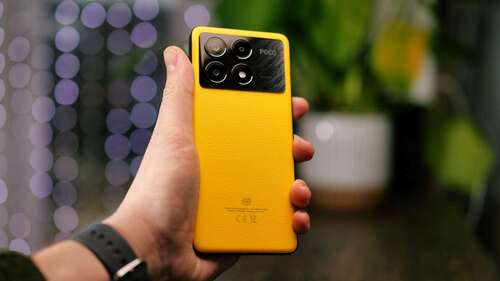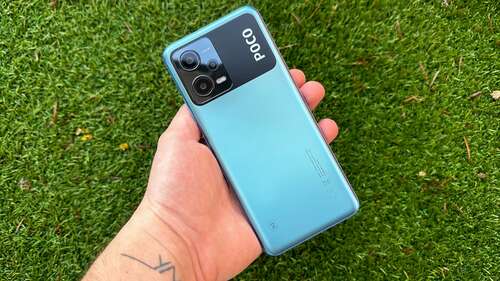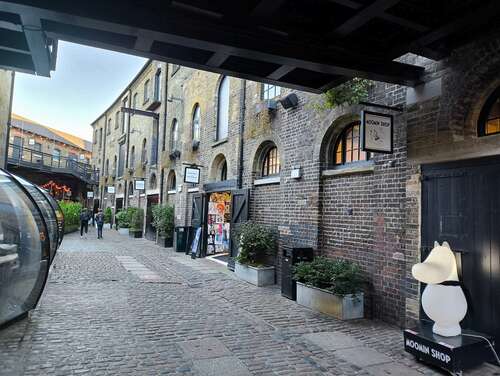Almost a year after the release of the Poco X5, Poco from Xiaomi has brought out the new X6 Pro phone.
As the X6 Pro isn’t just a newer model but also the Pro edition, there’s expected to be a few differences between the two, but which handset is better for your smartphone needs?
Keep reading to learn more about the Poco X6 Pro and X5 and see how they compare on key points, including their design, performance and battery life.
Pricing and availability
The Poco X5 is a slightly older handset as it launched back in February 2023, and is unsurprisingly the cheaper of the two, retailing at £279/€299.90. The Poco X6 Pro, however, launched almost a year later in January 2024, and is currently retailing at £369/€349.90.
Neither handsets are available in the US.
Design
Both the Poco X6 Pro and X5 are fairly matched in size, although the X5 is marginally larger measuring at 6.7-inches compared to the X6 Pro’s 6.67-inches, and both are an AMOLED panel.
However the X6 Pro can reach a peak of 1800nits, whereas the X5 can only reach 1200nits. This is still pretty decent, but will have a tougher fight with bright sunlight compared to the X6 Pro.
The Poco X6 Pro’s IP rating is marginally better than the X5, IP54 compared to IP53, which essentially means it’s not fully waterproof, although it will survive a rain shower.
Otherwise, both the X6 Pro and X5 are housed in a plastic frame and each have three different colour choices. However, the X5 options are more muted, coming in fairly standard Black, Blue or Green, whereas the X6 Pro options are Grey, Black and a vibrant Yellow. The yellow is also coated in a vegan leather texture, supposedly to boost the boldness.


Camera
Both handsets feature a trio of cameras at the rear and a selfie camera, with both the X6 Pro and X5 housing an 8MP ultra-wide camera and 2MP macro camera. The X6 Pro’s main camera, however, is 64MP compared to the lower X5’s 48MP.
The X6 Pro fared much better than the X5 in camera quality and usability. Its main 64MP camera captures detail and colours look realistic and more natural, whereas the X5’s 48MP photos are noticeably darker and colours are muted.
Portrait mode also provides better results on the X6 Pro compared to the X5. Our reviewer, Luke Baker reported that he found the X6 Pro’s “portrait mode works well too; the subject cutouts are quite accurate, and the level of background blur isn’t too overbearing.”
On the other hand, our X5 reviewer, Connor Jewiss, found that “Portrait Mode really struggles with edge detection. The X5 can just about handle simple subjects such as another phone, but freaks out at the sight of anything more complicated. Aside from edge detection, the resulting photos are very low resolution due to the digital zoom on the images.”
Overall, the X6 Pro offers higher quality images and videos, leaving the X5 trailing behind.


Performance
There’s a clear winner between the devices when it comes to performance. The X6 Pro is powered by the MediaTek Dimensity 8300-Ultra, which although isn’t the most up-to-date chip, is an extremely powerful processor that is usually found in higher-end models.
In comparison, the X5 runs on 2021’s Snapdragon 695 chip which isn’t the fastest chip available on the market, but should suffice for day-to-day use.
When it comes to gaming performance, the X6 Pro undoubtedly storms ahead. Although both the X6 Pro and X5 have a similar maximum refresh rate of up to 120Hz, ensuring smooth on-screen animations, the X6 Pro has a 480Hz touch sampling rate, making it more ideal for gaming.
Battery life
Both handsets squeeze in a mammoth 5000mAh battery, which should deliver all-day battery life.
Our benchmark tests showed that after 30-minutes of light gaming the X6 Pro saw a 10% battery drainage whereas the X5 saw just a 4% battery drainage, which means the X5 tested better at battery retention.
Both are also fast-charge capable, however to different extents with the X6 Pro allowing up to 67W compared to a lower 33W on the X5. In our benchmark test, it took the X6 Pro just 45 minutes to get from 1-100%, compared to the X5’s 125 minutes.

